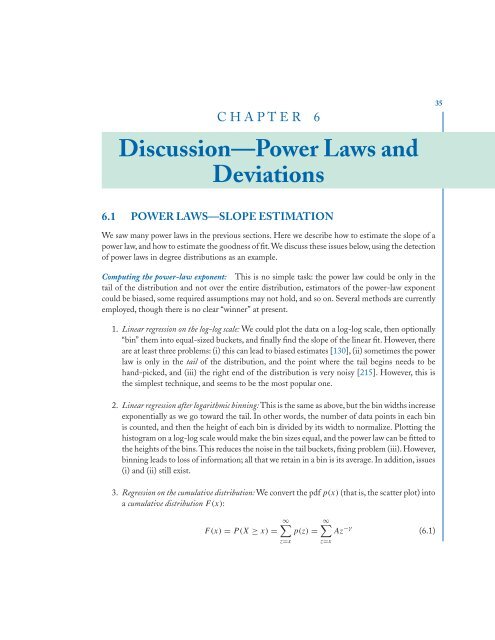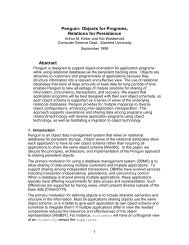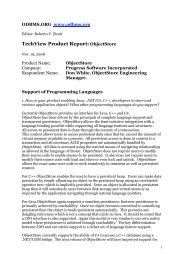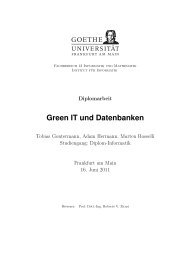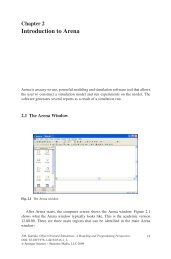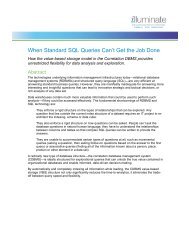Download Chapters 3-6 (.PDF) - ODBMS
Download Chapters 3-6 (.PDF) - ODBMS
Download Chapters 3-6 (.PDF) - ODBMS
Create successful ePaper yourself
Turn your PDF publications into a flip-book with our unique Google optimized e-Paper software.
CHAPTER 6<br />
Discussion—Power Laws and<br />
Deviations<br />
6.1 POWER LAWS—SLOPE ESTIMATION<br />
We saw many power laws in the previous sections. Here we describe how to estimate the slope of a<br />
power law, and how to estimate the goodness of fit. We discuss these issues below, using the detection<br />
of power laws in degree distributions as an example.<br />
Computing the power-law exponent: This is no simple task: the power law could be only in the<br />
tail of the distribution and not over the entire distribution, estimators of the power-law exponent<br />
could be biased, some required assumptions may not hold, and so on. Several methods are currently<br />
employed, though there is no clear “winner” at present.<br />
1. Linear regression on the log-log scale: We could plot the data on a log-log scale, then optionally<br />
“bin” them into equal-sized buckets, and finally find the slope of the linear fit. However, there<br />
are at least three problems: (i) this can lead to biased estimates [130], (ii) sometimes the power<br />
law is only in the tail of the distribution, and the point where the tail begins needs to be<br />
hand-picked, and (iii) the right end of the distribution is very noisy [215]. However, this is<br />
the simplest technique, and seems to be the most popular one.<br />
2. Linear regression after logarithmic binning: This is the same as above, but the bin widths increase<br />
exponentially as we go toward the tail. In other words, the number of data points in each bin<br />
is counted, and then the height of each bin is divided by its width to normalize. Plotting the<br />
histogram on a log-log scale would make the bin sizes equal, and the power law can be fitted to<br />
the heights of the bins.This reduces the noise in the tail buckets, fixing problem (iii). However,<br />
binning leads to loss of information; all that we retain in a bin is its average. In addition, issues<br />
(i) and (ii) still exist.<br />
3. Regression on the cumulative distribution: We convert the pdf p(x) (that is, the scatter plot) into<br />
a cumulative distribution F(x):<br />
∞ ∞<br />
F(x) = P(X≥ x) = p(z) = Az −γ<br />
z=x<br />
z=x<br />
(6.1)<br />
35


